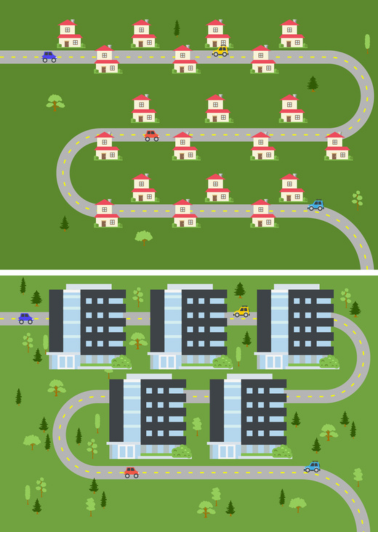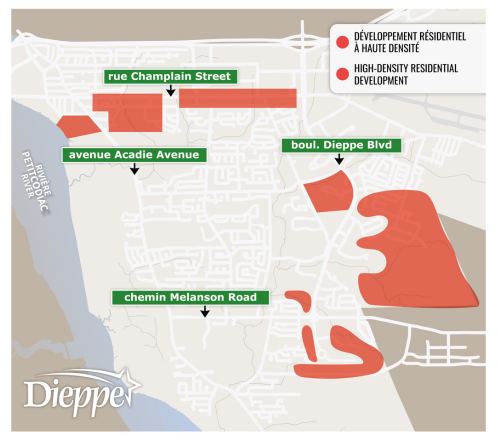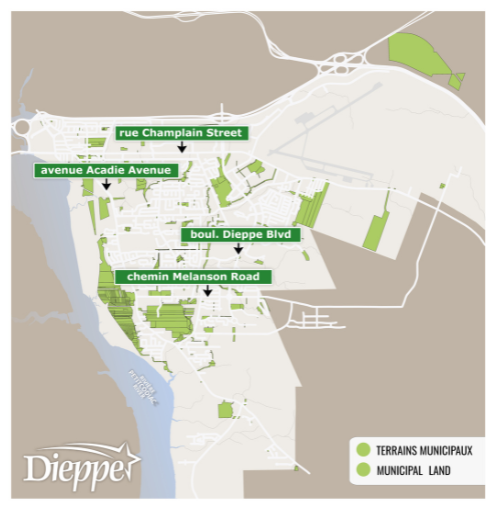Densification and green cover
When a city grows and begins to expand into areas around its core, this is known as urban sprawl. Areas that were once fields or forests are converted to neighbourhoods with houses, stores and offices, and car use becomes more prevalent.
Challenges of urban sprawl
- Higher road maintenance costs (more kilometres to maintain)
- Higher water and sewer network maintenance costs (more kilometres to maintain)
- Higher transit costs (more kilometres to service)
- Loss of biodiversity
- More time spent in a car or on a bus
- More heat islands
The solution?

As identified in our Municipal Development Plan, community development and growth must be managed responsibly and not “on the fly” to achieve planned, organized growth.
The following need to be identified:
- locations where development will take place
- types of buildings
- the density permitted in each part of the city
We also need to ensure that the requirements are understood and followed by all.
The truth is, almost every municipality in Canada is becoming urbanized. Think about where you grew up and how different it probably is today.
Densification is necessary and means building multi-family dwellings, not just single-family ones, which allows more people to live in the same area without having to expand the city.
It’s also important to respect the areas that have been designated for high-density development, rather than fight them. This allows us to limit cost increases (taxes) by using the infrastructure we’ve already paid for (e.g., roads, sidewalks, trails) instead of having to build new infrastructure.
Densification also makes it easier for residents to get around on foot, by bike and by bus and preserves more trees and land.
The single-family home model is no longer suited to our current situation. That’s why we’ve seen more apartment blocks spring up in our community in recent years.
Where is densification happening?

Dieppe’s Zoning Bylaw targets certain areas of the city for high-density residential development. It’s
those areas that have seen the most transformation in recent years and will see more in the future.
Urbanization and densification are taking place along the municipality’s main arteries.
- the downtown core
- Dieppe Boulevard
- Amirault/Acadie
| Low density | Single-family dwellings, semi-detached dwellings and townhouses |
| Medium density | Apartment blocks with 12 units per building |
| High density | Apartment blocks with more than 12 units per building |
Myths about trees
The City does not cut trees on land it doesn’t own. It’s usually private landowners who are doing the
cutting, for the purpose of building high-density, multi-family dwellings.
The municipality owns 5.1 km² of land and 4.5 km² of right-of-way land. Efforts are constantly being made to buy more land, though in a fiscally responsible manner.
The City adopted a tree bylaw to manage the cutting of trees, encourage protection and plan replanting. It was the first bylaw of its kind in the region. No other community in Atlantic Canada appeared to have a bylaw governing tree-cutting on private land.
Starting in summer 2024, trees will be replanted in parts of the municipality, thanks to the funds generated by the bylaw. The bylaw is barely a year old, so it will take a while before we see tangible results.
However, this decision, made in 2023, will ensure a sustainable future for our city and future generations!
Keep reading!





